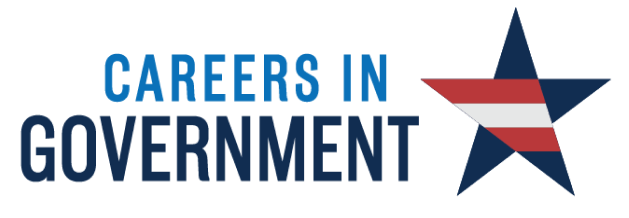KEY TAKEAWAY
- Explore the federal government’s commitment to Diversity, Equity, Inclusion, and Accessibility (DEIA) in public service.
- Examine how groundbreaking executive orders drive change and underscore the government’s proactive approach to diversity and inclusion.
- Uncover persistent challenges in implementing DEIA initiatives, revealing complexities in creating an inclusive workforce.
- Learn about ongoing efforts to enhance diversity and inclusion, showcasing a commitment to sustained progress.
From groundbreaking executive orders to the persistent challenges of implementation and the ongoing efforts to enhance diversity and inclusion, join Careers in Government and become a part of the movement that empowers America with a government workforce as diverse as the nation it serves.
Understanding Diversity, Equity, Inclusion, and Accessibility in Public Service
Public service champions diversity and equal employment opportunity, fostering inclusivity for all, including women of color and the LGBTQ+ community. The federal government prioritizes equity, transparency, and targeted recruitment to reflect the full diversity of the nation.
Discover available jobs

What is Diversity and Inclusion in Government?
Diversity and inclusion in government means fairly representing the American people. It’s not just about hiring people from different backgrounds but also creating a workplace where everyone feels valued and respected. This leads to better decisions and services for everyone.
- Diversity: Recruiting a workforce that reflects the American people.
- Inclusion: Creating a workplace where everyone feels valued and respected.
- Better decisions: Different perspectives lead to more creative and innovative solutions.
- Fairer services: Government services that meet the needs of all Americans.
- More vital workforce: A more engaged and productive workforce.
Implementation of Diversity, Equity, Inclusion, and Accessibility Initiatives
Successfully implementing these initiatives requires a systematic approach, transparency, and competency. Public service strategies emphasize recruiting and retaining diverse talent, fostering inclusive workplaces. Implementation efforts focus on providing accommodations and accessibility, ensuring equal employment opportunities for federal employees with disabilities.

- Strategies include promoting transparency in the recruitment, retention, and hiring processes and ensuring equal opportunity for all applicants.
- Inclusive workplaces that foster diversity are cultivated by recognizing the talents and contributions of women of color, the LGBTQ+ community, and individuals from underserved communities.
- Public service also prioritizes accommodations and accessibility, creating inclusive environments for employees with disabilities.
- While progress has been made, the implementation of initiatives in public service does come with challenges.
- Identifying and addressing these challenges requires a systematic approach.
- Some of the challenges include overcoming barriers such as systemic biases and cultural barriers.
- Public service also faces challenges in addressing gender pay gaps, fostering inclusive workplaces, and promoting equal opportunity for federal employees.
- However, by acknowledging and proactively addressing these challenges, the federal government can continue to advance within public service.
Why is diversity and inclusion important in government?
Diversity and inclusion in government are important because they ensure that policies and decisions are representative of and fair to all individuals in society. It allows for different perspectives and experiences to be considered, leading to more effective and equitable governance.

Examining the Big Picture
As the nation’s largest employer, the federal government has made notable progress in promoting equal employment opportunities within public service. Despite achievements in fostering inclusive workplaces and addressing gender pay gaps, ongoing efforts are required to enhance inclusive initiatives further. A continued commitment to these objectives underscores the government’s dedication to building a workforce that authentically reflects the nation’s equity. Government Legal Jobs play a vital role in ensuring diversity and inclusion within the legal framework of the government.

Achievements So Far
- The federal workforce has made significant progress in promoting equal employment opportunity, equity, inclusion, and accessibility. Resources like the government job search have enhanced recruitment capabilities.
- This progress is evident from the first day of employment when the federal government emphasizes the importance of inclusivity.
- The nation’s largest employer is committed to creating inclusive workplaces for recent graduates, college students, and applicants from all backgrounds.
- These achievements reflect the federal government’s dedication to promoting equal opportunity, accessibility, and inclusivity within the federal workforce.
Areas for Improvement
While the federal government has made strides, challenges persist in addressing gender identity, sexual orientation, and ethnicity. Overcoming these hurdles requires eliminating gender pay gaps, ensuring equal employee opportunities, and fostering inclusive workplaces to serve all Americans, especially underserved communities, better.
Biological Sciences Instructor (Part-Time Faculty - SC)
Employee Development Specialist Series
RECREATION: Pool Manager
How Can We Further Enhance Diversity and Inclusion in Public Service?
To further enhance diversity and inclusion in government, it is crucial to advance equal employment opportunity, accessibility, and inclusion at the federal level. This requires a systematic approach that promotes transparency and competencies across all federal agencies. Enhancing recruitment, retention, and hiring practices to attract and retain a diverse workforce is essential. By advancing equity, inclusion, and accessibility efforts, public service can better serve the American people and reflect the full diversity of the nation it represents.
Conclusion
In conclusion, embracing diversity, equity, inclusion, and accessibility in public service is not just a noble endeavor but a necessary one. It is about creating a government that truly represents and serves all its citizens, regardless of their backgrounds or abilities. Through implementing executive orders and adopting effective strategies, we have seen some progress in advancing these principles. However, there is still much work to be done. We must continue to examine the big picture, celebrate our achievements, and identify areas for improvement. Together, let us strive to build a more inclusive government that values and prioritizes diversity in all its forms. If you want to be a part of this journey, get in touch with us today.







